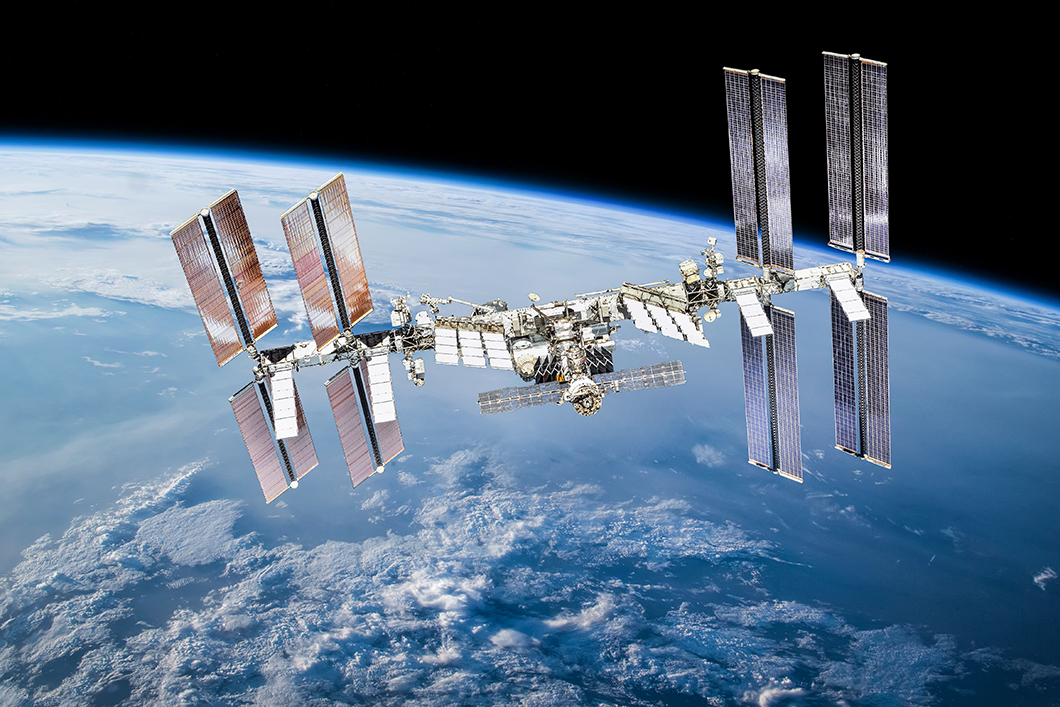
International space station with astronauts. Elements of this image furnished by NASA
Source: iStock.com/dima_zel
How do amorphous metals age in space? This is a question that cannot be answered through experiments on Earth. A team around Prof. Maaß (BAM, UIUC) have received approval for long-term exposure experiments on board the International Space Station (ISS) by the European Space Agency (ESA).
In a Europe-wide tender, the team was awarded four of a total of 40 sample positions on the ISS. The University of Göttingen and ETH Zurich are also involved in the experiments.
Amorphous metals are actually glasses that do not have a crystalline but an amorphous structure on the atomic level and therefore have very special mechanical properties. They can be used, for example, to make glass housings for smartphones or gears that are so strong and resistant to wear that they do not require any lubrication.
But how amorphous metals behave under the extremely harmful environment present in space remains unknown. The planned study is therefore a decisive step towards their successful use in space. The proposed study is a crucial step towards successful usage of glassy metals in space exploitation. The aging experiments will be conducted on the external ISS platform Bartolomeo.
"Participation in this mission is a unique opportunity for BAM to study state-of-the-art materials and it shows that we are researching at the forefront of the field," says Robert Maaß. Preparations for the experiments are already underway and the launch is planned for the end of 2021.


